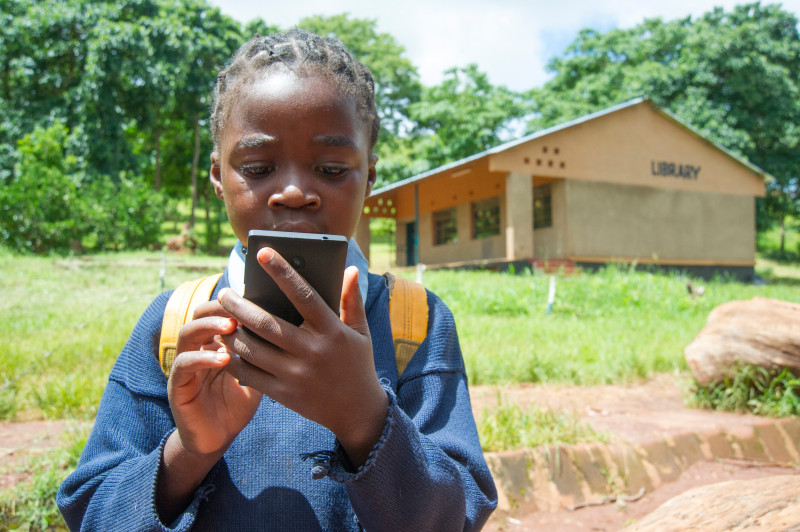
UNESCO convenes Mobile Learning Week annually to allow international development implementers, funders, researchers and corporations to share research and best practices for using mobile learning to support everything from basic education and workforce development training to health, agriculture, and elections education.
More than 1,000 participants from 70 countries attended this year’s event, which focused on an area where increases in mobile learning are highlighting an important gap. In a world where education, training and other resources are increasingly available digitally, these resources remain more available to men and boys than to women and girls.
Mobile learning should be a great equalizer. After all, any person with a mobile device or access to the internet can find books, courses and information easily and discretely. Instead, the availability of mobile technology is throwing today’s large digital divide between men and women into sharp relief.
In low- to middle-income countries, women are 21 percent less likely to own a mobile phone than men, according to UNESCO and mobile phones statistics gathered by the GSMA and the Cherie Blair Foundation.
Intel found in their report Women and the Web that, on average, 25 percent fewer women than men in developing countries have access to the internet, with this gap at nearly 45 percent in sub-Saharan Africa.
In addition to access challenges, barriers that keep women and girls’ from taking full advantage of mobile learning opportunities also include low literacy and technology skills and the need for more gender sensitive content and pedagogy.
Mobile learning at work
Despite these barriers, those at the conference agreed that given the ubiquity of mobile devices, and the rapid growth in smartphone ownership worldwide, they are one of the best tools we have to help women and girls learn, gain skills and live healthy and empowered lives.
Conference presenters shared creative ways they are using to lower the access barriers for women and girls, and programs that are having an impact.
Several groups, for example, discussed how they are using voice platforms for learning to ensure they can reach both literate and illiterate women. Media Matters for Women in Sierra Leone has developed a model where trained media professionals develop and record audio segments on topics such as human rights, reproductive health and Ebola.
The segments reach communities through listener-distributors who receive the segments on a mobile phone and then transfer them to women using Bluetooth, a technology that today is found even on very low-end phones. Women then are able to continue sharing the audio segments through Bluetooth or play them for listener groups.
VOTO Mobile in Ghana uses both SMS and Interactive Voice Response (IVR) technology to reach women with information about maternal and newborn health. Those who subscribe to the voice service receive regular calls, which play pre-recorded health education messages in the local language.
Creative’s Technology for Development team presented its mobile reading model, which empowers women to be more involved in their children’s literacy education by delivering mother tongue, early grade stories via SMS to parents. These SMS stories are being developed to be gender sensitive by including empowering female characters and themes such as girls schooling.
The model will be piloted in Zambia through support from the All Children Reading: A Grand Challenge for Development partners: USAID, Australian Aid and World Vision.
Creative also demonstrated its mobile and online learning platform CreativeU—a platform that is helping to make high quality education and training opportunities more easily accessible for all people in development.
Girls who are educated marry later, have fewer children, healthier families, better understand their rights and gain the confidence to advocate for them.
Leveraging mobile technology for greater education parity and empowerment will help narrow the digital divide between men and women, and lead to more of the development, gender and human rights gains we all want to achieve.